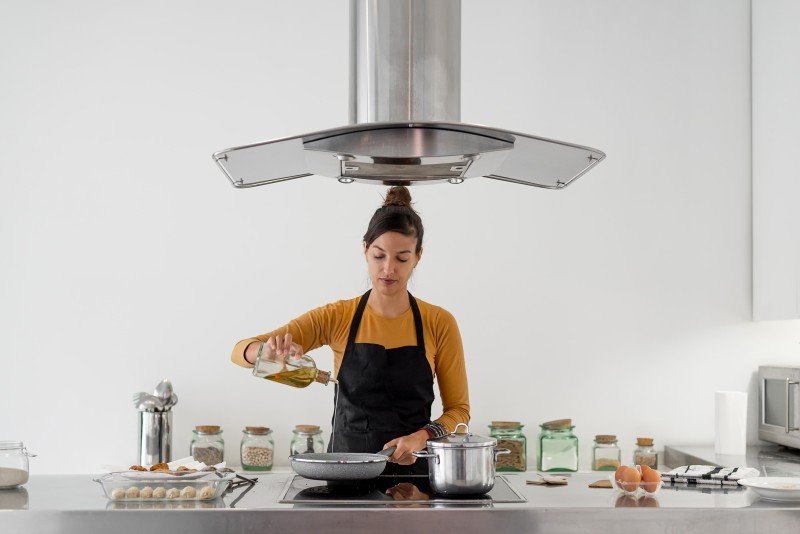5 Killer Quora Questions On Hobs And Ovens
Understanding Hobs and Ovens: A Comprehensive Guide for Cooking Enthusiasts
The kitchen is typically related to as the heart of the home, where cooking developments come to life. Two necessary components of any kitchen are the hob and the oven. While they are both crucial for food preparation and cooking, lots of house owners might not totally understand the differences, functionalities, and numerous types readily available in the market today. In this post, we will explore these devices in information, assisting you make informed decisions for your cooking requirements.
Tabulation
- What is a Hob?
- 1.1 Types of Hobs
- 1.2 Benefits of Different Hob Types
- What is an Oven?
- 2.1 Types of Ovens
- 2.2 Benefits of Different Oven Types
- Choosing the Right Hob and Oven for Your Kitchen
- Frequently Asked Questions (FAQs)
- Conclusion
What is a Hob?
A hob, commonly called a cooktop, is a cooking surface that you position pots and pans on to prepare food. It features a variety of heating components and is often set up on countertops. In ovensandhobs.uk cooking areas, hobs are available in numerous styles, innovations, and functionalities.
1.1 Types of Hobs
There are a number of types of hobs offered in the market:
Type
Description
Gas Hob
Uses gas burners for cooking, offering precise temperature level control.
Electric Hob
Operates using electrical heating components, frequently seen in strong or glowing kinds.
Induction Hob
Utilizes electromagnetic fields to heat pots and pans directly, promoting energy efficiency.
Ceramic Hob
Functions a smooth glass top, using electric coils beneath the surface area.
Strong Plate Hob
Standard electric hobs with exposed metal plates that warm up.
1.2 Benefits of Different Hob Types
Gas Hobs:
- Quick heating & cooling.
- Visual flame control for exact cooking.
Electric Hobs:
- Even heating; suitable for simmering and boiling.
- Easy to clean, especially flat surfaces.
Induction Hobs:
- Energy-efficient as only the pot heats up.
- Safety features, such as automatic shut-off.
Ceramic Hobs:
- Attractive aesthetics with a smooth surface.
- Even surface areas for easy cleaning.
Strong Plate Hobs:
- Cost-effective and durable.
- Great for fundamental cooking requirements.
What is an Oven?
An oven is a kitchen home appliance utilized for baking, roasting, and broiling food. Ovens can be standalone systems or built into kitchen cabinetry, providing numerous cooking approaches that can boost or transform components.
2.1 Types of Ovens
Comparable to hobs, there are multiple types of ovens, each with its benefits:
Type
Description
Standard Oven
Operates with heating aspects, best for baking.
Convection Oven
Utilizes fans to flow hot air, cooking food uniformly and quickly.
Microwave Oven
Cooks food utilizing electro-magnetic radiation; ideal for reheating.
Steam Oven
Uses steam to prepare food, protecting moisture and nutrients.
Wall Oven
Built into the wall, using benefit and visual appeal.
2.2 Benefits of Different Oven Types
Standard Ovens:
- Simple to utilize without any complicated settings.
- Versatile for different cooking methods.
Convection Ovens:
- Faster cooking times due to air flow.
- Enhanced browning and crisping for baked items.
Microwave Ovens:
- Quick cooking or reheating of food.
- Energy-efficient for low-volume cooking.
Steam Ovens:
- Health-conscious cooking that retains nutrients.
- Exceptional for baking bread and cooking vegetables.
Wall Ovens:
- Convenient positioning; conserves area.
- Less bending needed to gain access to cooking meals.
Selecting the Right Hob and Oven for Your Kitchen
When selecting a hob and oven, factors such as space, cooking style, and personal preferences should be thought about. Here's a simple guide to assist you select:
Factors to Consider
- Cooking Needs: Evaluate your cooking practices. Do you frequently bake, or is stovetop cooking more common?
- Space Availability: Measure your offered kitchen area. Some hobs or ovens might need more space than others.
- Fuel Type: Decide between gas and electric, based on schedule and individual preferences.
- Spending plan: Determine what you're willing to spend and find choices within that variety.
Quick Tips
- Prioritize Efficiency: Look for energy-efficient models to minimize long-term expenses.
- Check out Reviews: Explore user evaluations to gather viewpoints on efficiency and reliability.
- Seek advice from Professionals: Seek guidance from kitchen style professionals when planning your layout.
Often Asked Questions (FAQs)
1. What is the distinction in between a hob and an oven?
A hob is a cooking surface generally for stovetop cooking, while an oven is an enclosed area utilized for baking, roasting, and broiling food.
2. Can I utilize any pot on an induction hob?
No, induction hobs require magnetic pots and pans. Stainless-steel and cast iron pots work, but non-magnetic products like aluminum won't.
3. How do convection ovens differ from traditional ovens?
Convection ovens use fans to distribute hot air for even cooking, whereas traditional ovens do not have this feature.
4. Is it possible to have both a hob and oven as a single unit?
Yes, there are variety cookers that integrate a hob and an oven within one home appliance, offering a comprehensive cooking service.
5. How do I tidy my hob and oven?
Most hobs and ovens have actually advised cleaning approaches depending upon their products. It is a good idea to speak with the maker's instructions for the best practices.
Comprehending the distinctions between hobs and ovens is vital for anyone looking to enhance their kitchen area or enhance their cooking skills. By knowing the various types, their benefits, and how to select the right ones for your needs, cooking can end up being a more pleasurable and efficient experience. Whether you are a knowledgeable chef or a newbie cook, the ideal combination of hob and oven can raise your culinary creations to new heights.
